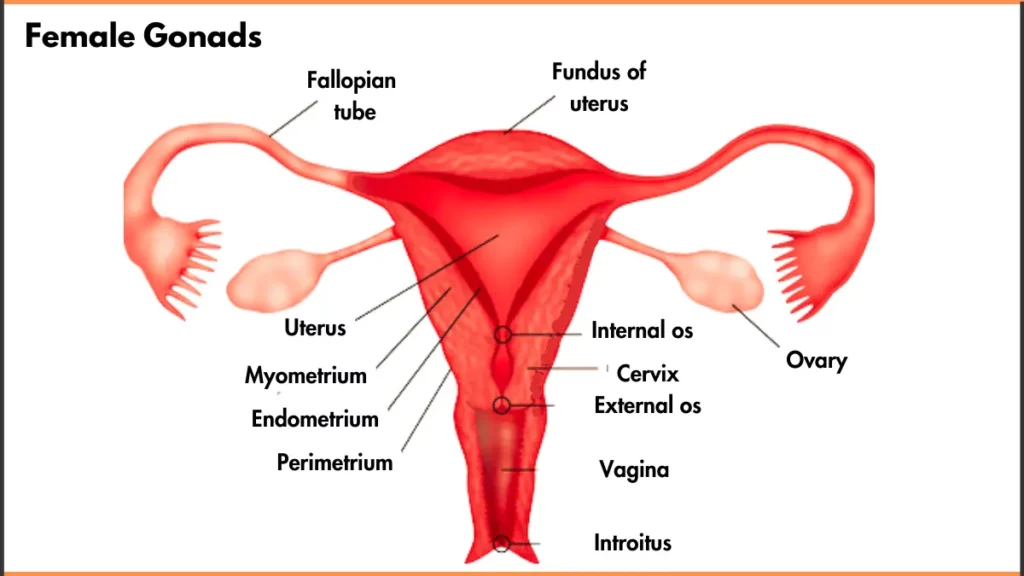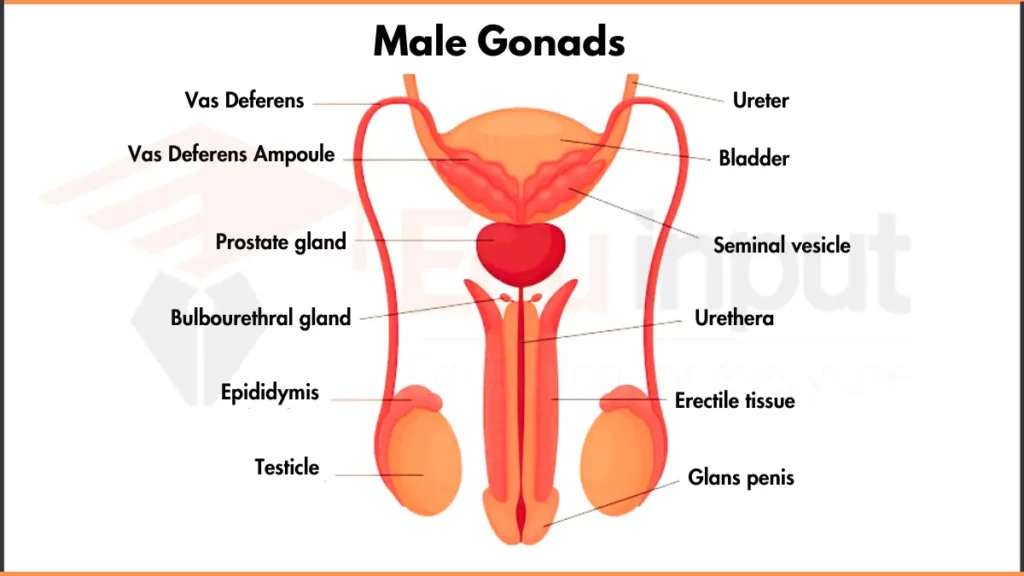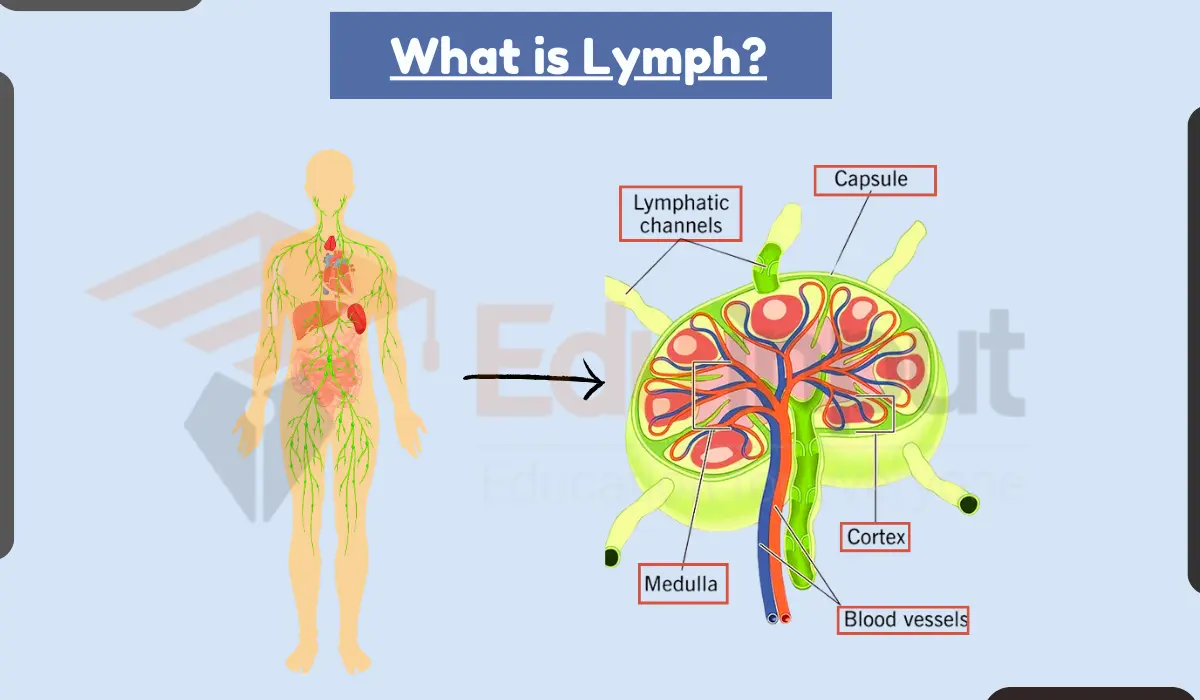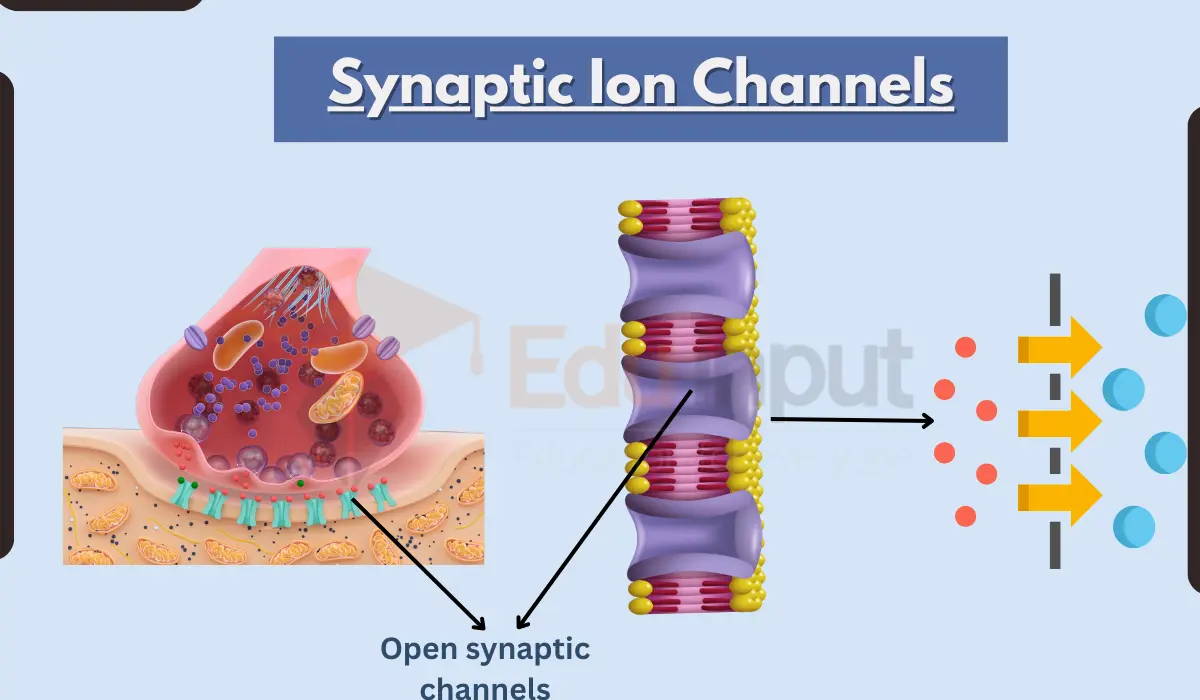Gonads-Definition, Types, Functions, and Sex Hormones
Gonads Definition
Gonads are glands that are responsible for producing hormones that are involved in reproduction and various bodily functions. They produce hormones like estrogen, progesterone, and testosterone.
Gonads are located at lower abdominal region of male and female body.
The word gonad comes from the Greek words meaning testicle or ovary. In biology, gonads are reproductive organs that produce gametes (eggs and sperm). They also contain hormones that regulate sexual development and reproduction.

Female Gonad–Ovaries
The ovaries are female gonads. Ovary is located in the pelvis. They produce eggs and female hormones. It regulates the menstrual cycle and support reproduction. They function until menopause and contribute to overall hormonal balance.

Overy’s Hormones
The primary hormones secreted by the ovaries are:
Estrogen
This is a group of hormones that includes estradiol, estrone, and estriol. Estrogen is responsible for the development and maintenance of female reproductive structures, such as the uterus and breasts.
It also plays important role in the regulation of the menstrual cycle and the secondary sexual characteristics of females.
Progesterone
Progesterone is produced mainly in the ovaries after ovulation (the release of an egg). It prepares the uterine lining for implantation and supports early pregnancy if fertilization occurs.
If pregnancy does not occur, progesterone levels drop, that leads to menstruation.
Male Gonads–Testes
Male Gonads are also known as the testes or testicles. They are part of the male reproductive system. They are situated within a sac-like structure called the scrotum. It hangs behind the penis.

The main function of the testes is to produce and secrete testosterone, which is a male sex hormone known as an androgen. Testosterone are involved in the development of male characteristics and is essential for reproductive health in males.
The testes consist of many coiled seminiferous tubules. These tubules produce spermatozoa. Interstitial cells between the tubules produce two gonadal hormones. When sperms leave Testes, they enter in epididymis for maturation.
Teste’s Hormones
Testes secrete following hormones:
Testosterone
Testosterone is the primary male sex hormone and plays a crucial role in the development of male reproductive organs and secondary sexual characteristics. It stimulates the production of sperm, enhances muscle mass, bone density, and contributes to the regulation of libido.
Androstenedione
Androstenedione is a precursor hormone to testosterone. It can be converted into testosterone in the body. It is an androgen and contributes to male characteristics.
Dihydrotestosterone (DHT)
DHT is a potent form of testosterone formed by the action of the enzyme 5-alpha-reductase. It is responsible for the development of male external genitalia. It plays a role in hair growth and prostate health.
Androgens
Androgens are a group of male sex hormones that include not only testosterone but also other hormones like androstenedione. Androgens are involved in the development of male characteristics and the overall functioning of the male reproductive system.
Function of Gonads
Here are the main functions of Gonads:
- Production of sex hormones (testosterone in males, estrogen, and progesterone in females) that regulate sexual development and reproductive functions.
- Sperm production (spermatogenesis) in males, essential for sexual reproduction.
- Egg production (oogenesis) in females, necessary for fertilization and pregnancy.
- Direct involvement in reproductive processes, including gamete production and release for fertilization.
- Influence on the development of secondary sexual characteristics in males and females.
- Role in body growth, musculoskeletal health, and maintenance of bone density.
Blood Supply to Gonads
Gonadal Artery
The gonadal arteries originate from the abdominal aorta at the level of the second lumbar vertebra. They are paired vessels.
The gonadal arteries supply blood to the gonads (reproductive organs). In some cases, the gonadal artery has a high origin (superior to L2), and in others, it may originate from the main or accessory renal artery.
Gonadal Vein
The gonadal veins are paired vessels that function to drain the reproductive organs, specifically the ovaries in females and the testes in males.
In males, it is referred to as the testicular vein or internal spermatic vein, while in females, it is known as the ovarian vein.
Gonads–Latest Research
- Scientists reviewed gonadal distribution in 409 human true hermaphroditism cases, finding ovary on the left side in 62.8% and testis on the right side in 59.5%. The most common gonad was ovotestis (44.3%). Chromosomal complement correlated with gonadal distribution, and 46,XX individuals showed a male phenotype in 54% of cases. [1]
- Scientists used tilapia as a fish model and discovered that gonads, like the pituitary gland, directly control body growth. Gonadectomy slowed growth, but restored growth when gonads were re implanted, indicating their role in growth regulation through hormone secretion and other factors. [2]
- Scientists found that specific RNA elements in sperm are linked to successful embryo development. By sequencing sperm from 47 men, they identified 366 RNA elements associated with blastocyst formation, regulated by microRNAs. This insight could improve infertility screening and reduce the time to pregnancy.
- Researchers discovered that leptin signaling affects ovarian inflammation and granulosa cell function in obese mice. Different obesity models showed varying impacts on steroidogenesis and inflammation. The findings highlight how leptin signaling in obesity influences ovarian health and fertility.
- Scientists revealed that the neurosteroid allopregnanolone (ALLO) affects ovarian function in female rats by increasing progesterone levels and altering enzyme expression and cell proliferation, primarily through the GABAA receptor. This research provides insight into ALLO’s role in ovarian health and fertility.
- Researchers linked the semen microbiome to sperm quality, finding specific bacteria like Lactobacillus iners associated with sperm motility and concentration. This study suggests that microbiome alterations could be a factor in unexplained male infertility and a target for new treatments.
- Scientists are exploring cellular dysfunction in non-obstructive azoospermia (NOA), identifying issues like somatic cell immaturity and increased inflammation. Understanding these mechanisms is key to developing regenerative therapies and improving treatment for NOA.
Frequently Asked Questions-FAQs
What are gonads in females?
Female gonads are ovaries, that is a pair of reproductive glands.
What are the male gonads?
Male gonads are testes also known as testicles. These are the reproductive glands of males.
Where did gonads come from?
Gonads are derived from the intermediate Mesoderm.
What is the main function of gonads?
In females, Gonads produce ova (egg), While in males, They produce sperm.
Where are the gonads located?
The gonads are located in the lower abdominal region. In males they are found in the scrotum behind the penis. In females, they are situated in the pelvic cavity.
When do the gonads start to secrete their sex hormones?
Gonads start secreting sex hormones during puberty, around ages 9 to 14 in boys and girls. Testes produce testosterone in males, leading to physical changes like facial hair, deep voice, and muscle development. In females, the primary sex hormones produced by the ovaries are estrogen and progesterone.







Leave a Reply